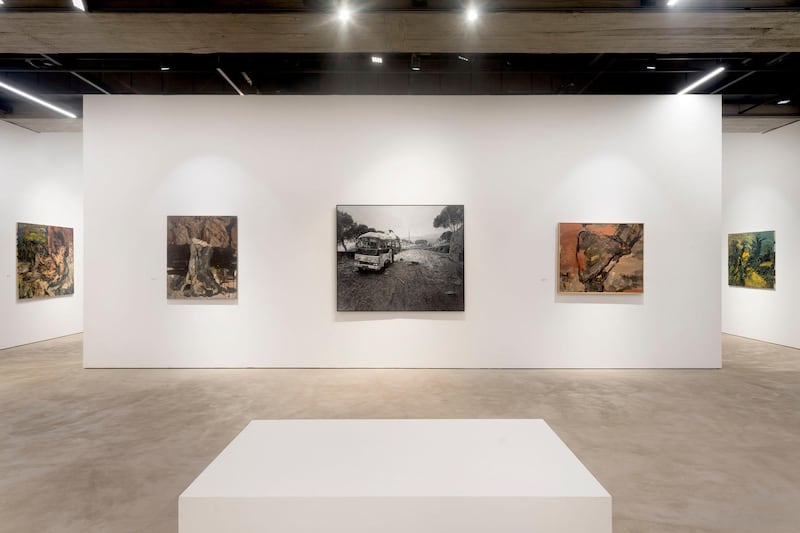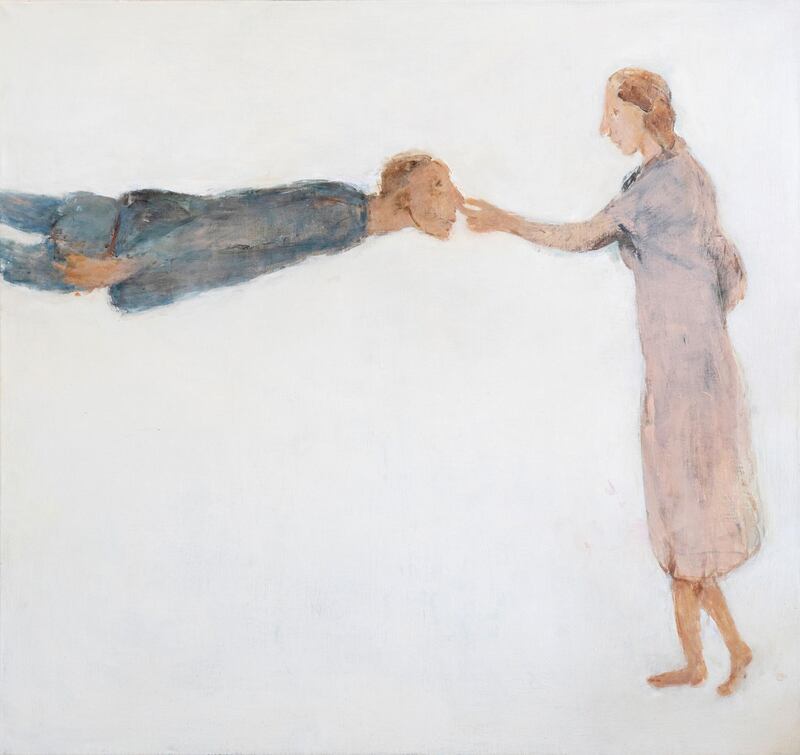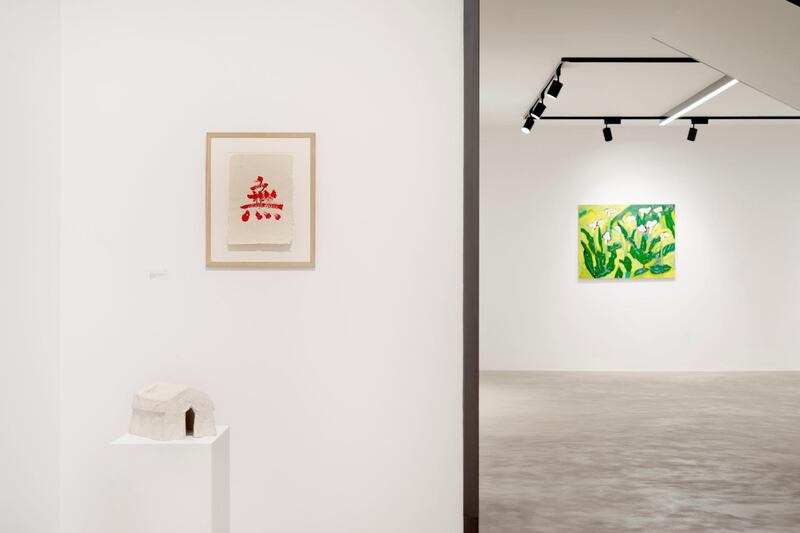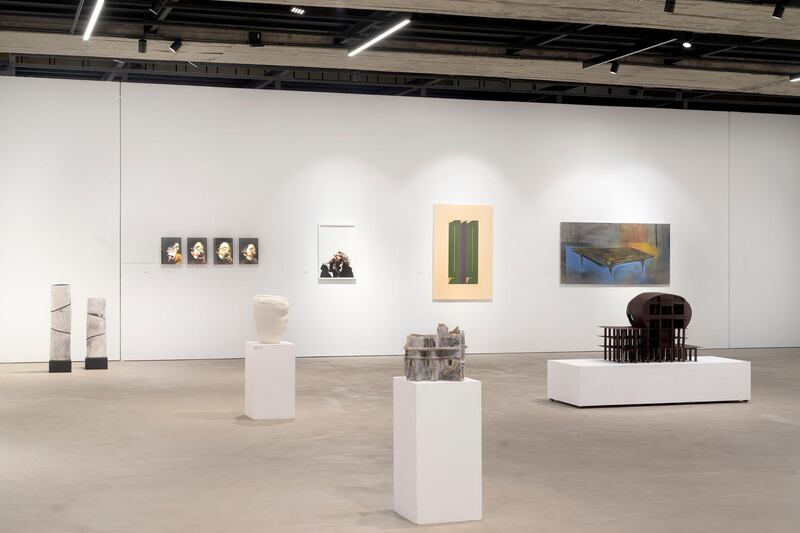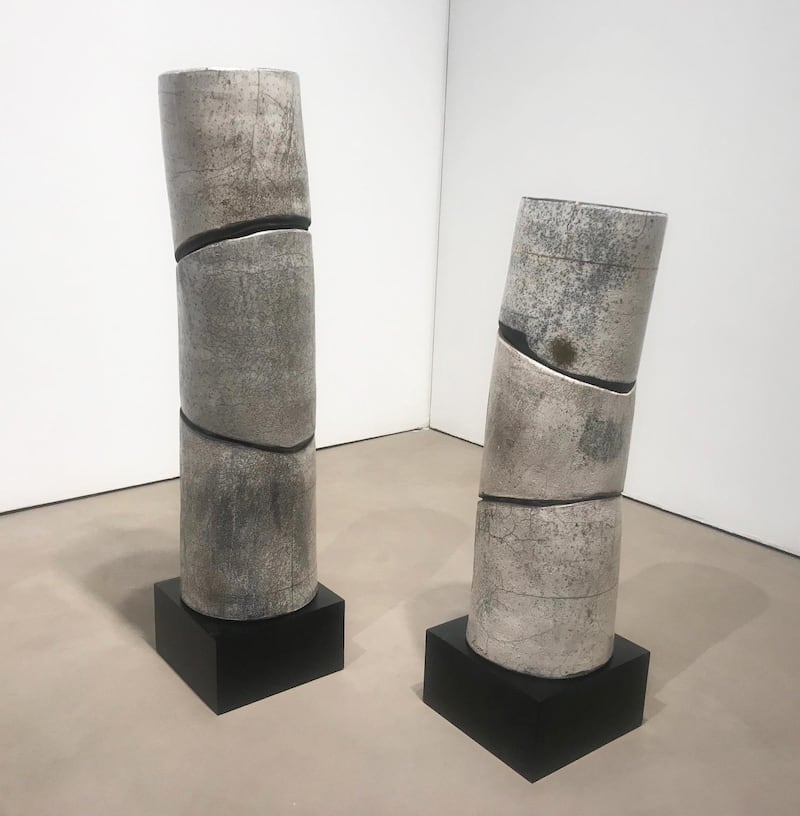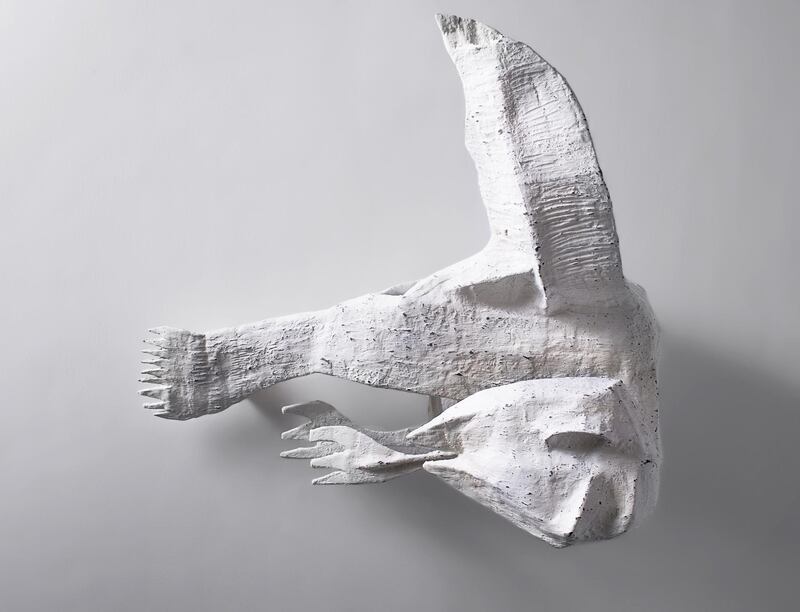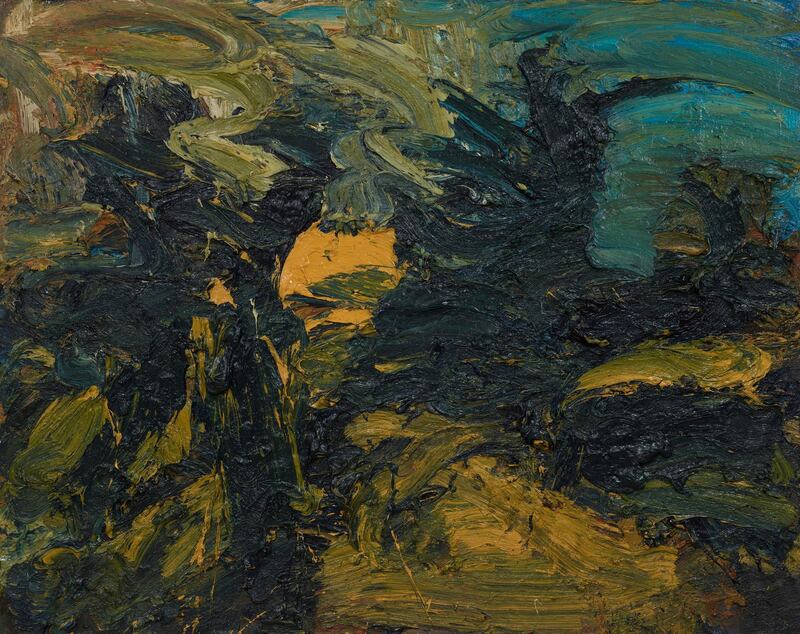“I sincerely believe that today people don’t see. They buy with their ears, not with their eyes.” Sitting in his office, overlooking his eponymous gallery, Saleh Barakat laments the state of the contemporary art market. Believing that collectors are increasingly driven by profit, rather than passion, he says that hype has become more important than how an artwork looks, the skill with which it is made and even what it has to say.
“I belong to a vanishing generation, where for a long time myself and all the collectors around me were always looking for the thrill in looking at an artwork,” he says. “Now I feel that the scenography has become so important in contemporary art that it is spectacular, but I don’t notice… the artwork itself.”
Seeing artwork on its own
Out of Context, which opened last week at Saleh Barakat Gallery in Beirut, questions the narrative and its role in shaping perception. Rather than tying works by different artists together with a unifying theme, it deliberately isolates them. "In group exhibitions, there is an overarching narrative that sometimes draws a thread between works, but is also often imposed on works in a way that influences how you see them," says Natasha Gasparian, in-house curator at the gallery, who collaborated with Barakat on the show. "We wanted to start from the work itself and be open to the possibility of other narratives that are grounded in the practice of seeing."
Barakat says the idea of the exhibition came when he was visiting artist Nadia Safieddine at her studio. As they sat talking, his attention was caught by a painting behind her. When he commented on the beauty of the work, asking if it was new, she told him he had exhibited it in his gallery a year previously.
"Sometimes, when you're doing a show for one artist, you tend to see the work in its entirety, but not the works individually," he says. "I think you can re-read it differently when it's alone… Put within a narrative, it has a certain sense. Put alone, it has a new meaning. I looked for pieces that had been shown, but had not been seen alone."
The result is a group exhibition that eschews cohesion. Visitors are encouraged to contemplate each piece in search of “the thrill”, as Barakat puts it. Of course, by staging the show as a rebellion against narrative, a narrative is created. It’s a contradiction that Gasparian acknowledges. “I think what’s interesting is that you can’t get away with something like this without writing a kind of curatorial statement that supports it,” she says. “It ends up being a group exhibition, but I think its aims are different.”
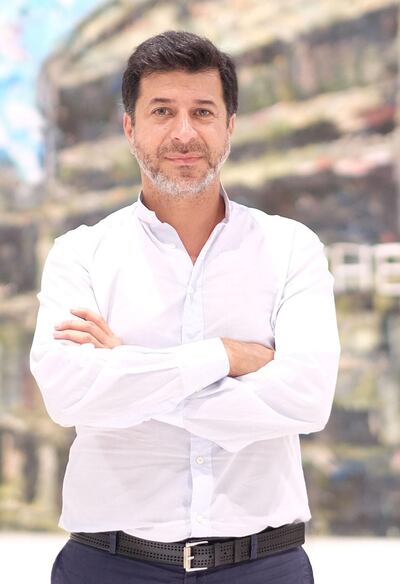
One drawback of the exhibition is that it can be hard to view a single work without nearby pieces intruding into the field of vision. While erecting physical boundaries between each piece would have enforced a more individualistic approach, simply encouraging viewers to consciously disassociate each artwork from its surroundings changes the way the exhibition is approached and experienced.
Inside the exhibition
Including more than 30 works by Lebanese artists, spanning painting, photography, sculpture, mixed media and ceramics, the exhibition is unusually diverse, freed from the restrictions of a unifying theme. Evasion, the large oil painting by Safieddine that inspired the exhibition, hangs facing the staircase, the first work visitors see when entering the underground gallery. A symphony of green and ochre shades, it is a landscape executed with such wild energy and movement that it approaches abstraction.
Safieddine says she was surprised when she realised that Barakat didn’t recall the work, but believes that it is natural for certain pieces to be overlooked in the context of a larger exhibition. “You see what you want to see,” she says. “It depends on your awareness. Sometimes you’re not attracted to something, and that’s okay.”
Two paintings by Tagreed Darghouth, whose solo show at the gallery last September explored the occupation of Palestine, show how works resonate differently when stripped of their context. Shown as part of a series, a painting of a tree stump and another capturing the bucket of an industrial digger evoked the brutality of Israeli occupation. Viewed individually, they instead call to mind global themes of deforestation, mining and ecological destruction.
Other artworks have shifted in meaning over time. “I think what’s interesting about artwork is that it’s an encapsulation of its time and of its social history,” says Gasparian. “I think if the criteria for exhibiting and scrutinising art was that it was beautiful, then today it seems to me that the criteria is relevance. You’re constantly reasserting why it’s relevant in relation to contemporary debates, certain trendy discourses, our contemporary way of life and society.”
She draws attention to a mixed media work by Hiba Kalache, entitled I Love You Because… Measuring 2.5 metres tall, it is a vivid accumulation of overlapping splatters of red, orange and yellow ink, aquarelle and acrylic, through which words can be glimpsed. Originally shown in 2012, it was exhibited as part of a series of five works, displayed side-by-side. The artist never anticipated that it would be exhibited again.
“Kalache is an artist who, when she works on a project, is advancing a kind of theme, and then when she’s done with that it’s over,” Gasparian says. By showing a single panel, removed from the context that originally lent it meaning, the curators encourage reflection on the physical and formal elements of the work, rather than its conceptual message.
Some of the artworks have never been exhibited before. A delicate ceramic depiction of a tent, resembling those provided to refugees by the United Nations, sits alone on a small plinth. Displayed in isolation, it looks fragile, vulnerable and incongruous, as though spirited away from its natural place, surrounded by other tents. The artist Samar Mogharbel confirms that it was originally conceived as part of a series that was never completed. “To see it alone, lonely like this, is quite interesting,” she muses.
Barakat says the aim of the exhibition is to encourage people to seek out work that evokes a strong emotion. “The real investment in art is the feeling,” he says. “You buy an apartment, you rent it. You buy land, you cultivate it. You put money in the bank, you take interest. You buy stocks, you have dividends. What do you get from art, apart from the pleasure that it brings you every single day?”
Out of Context is on show at Saleh Barakat Gallery in Beirut until June 22
